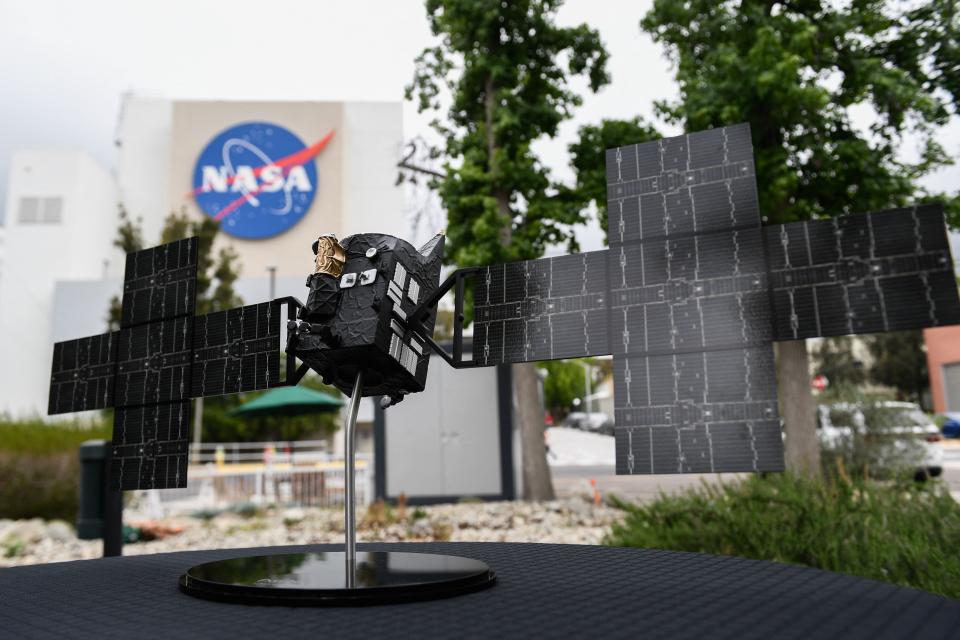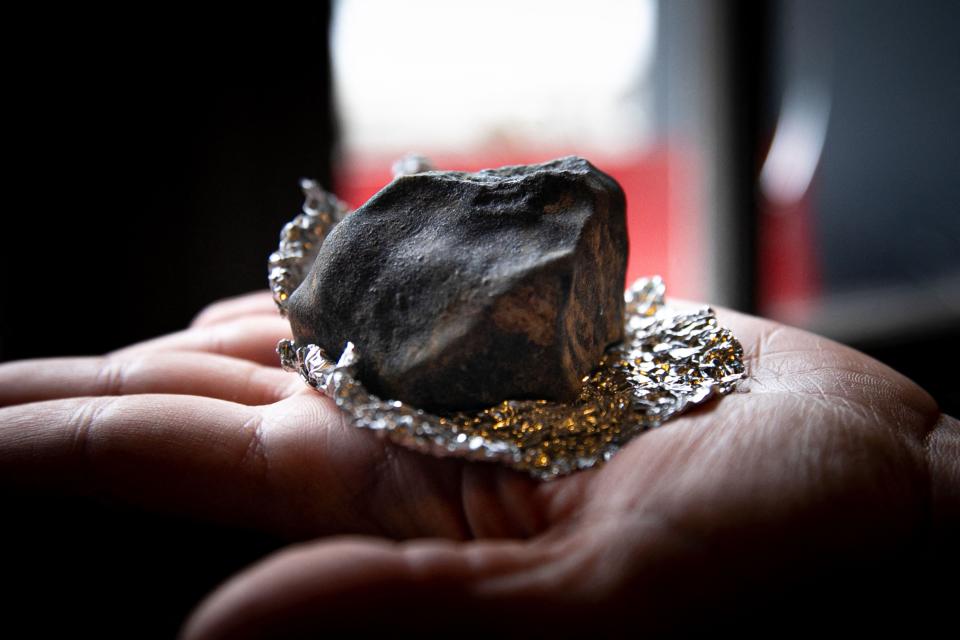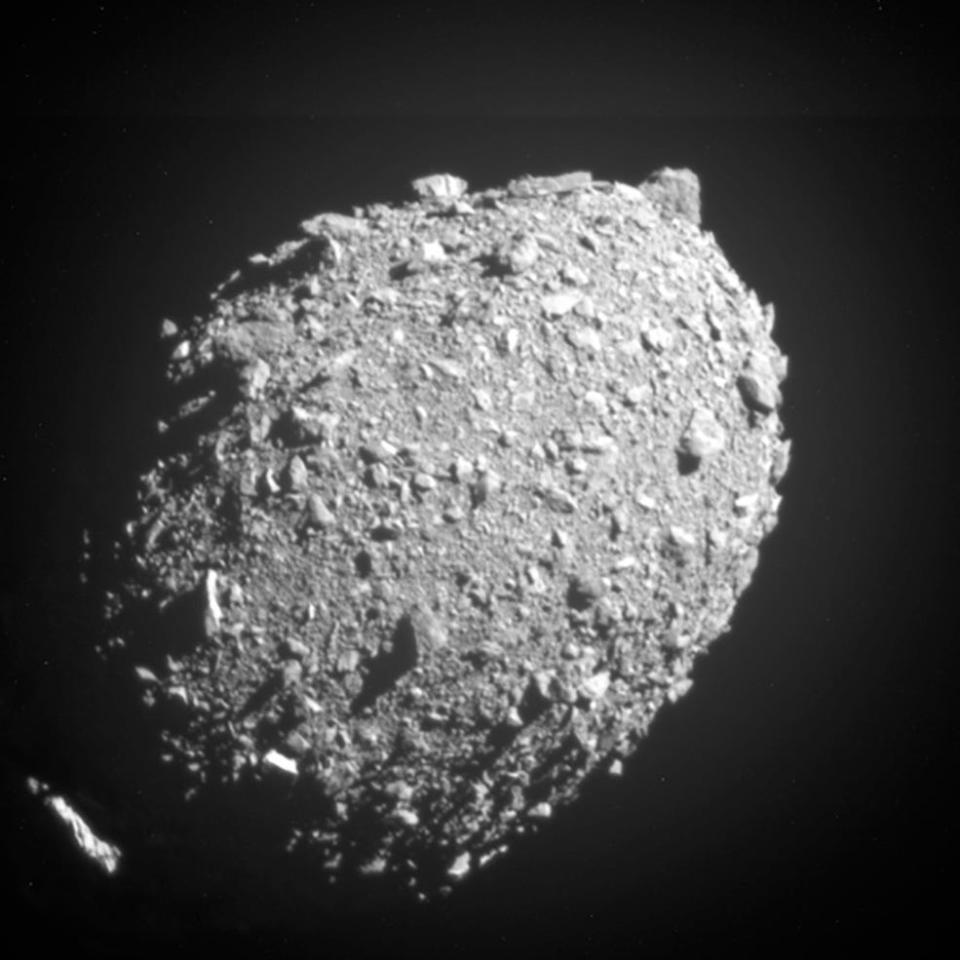NASA tracks 5 'potentially hazardous' asteroids that will fly by Earth within days
Five massive asteroids will fly near Earth between Wednesday and Sunday, though none are on a trajectory that makes them an imminent planetary threat, according to NASA.
Three of the asteroids are the approximate size of commercial airplanes, with the largest among them being 170 feet long. Dubbed 2023 QE8, that asteroid is expected to pass by within 945,000 miles of our planet on Sunday in what will be its first trip in Earth's orbit in two years.
None of the other four asteroids are expected to fly nearly as close to Earth. However, all five asteroids are large enough and close enough in proximity to Earth for NASA's Jet Propulsion Laboratory in Pasadena, California to deem them "potentially hazardous."
'At the threshold:' How UFOs became mainstream in America
What makes an asteroid 'potentially hazardous?'
The lab, which the California Institute of Technology manages on behalf of NASA, tracks any asteroid or comet with orbits that will bring them within 4.6 million miles of Earth, or 19.5 times the distance to the moon.
The Asteroid Watch dashboard displays the date of its closest approach, the object's approximate diameter and its distance from Earth. Any object larger than about 150 meters (about 492 feet) that can approach the Earth to within this distance becomes potentially hazardous, according to the lab.
Most asteroids orbit within the main asteroid belt between the orbits of Mars and Jupiter. But some follow paths that circulate into the inner solar system, including so-called near-Earth asteroids, according to NASA.

What do we know about the incoming asteroids?
All but one of the next five asteroids to fly by Earth have visited Earth's orbital neighborhood before, and are projected to do so again in the coming years, according to NASA's Center for Near Earth Object Studies.
At 68 feet, an asteroid dubbed 2023 QF6 will be making its first — and potentially only — visit near our planet when it comes within 1.6 million miles on Sunday.
But before that, the next time an asteroid passes near Earth will be Wednesday, when a smaller 59-foot long asteroid named 2021 JA5 makes its approximate closest approach at 3.1 million miles. Two more asteroids — one the size of a plane (2023 QC5,) the other the size of a bus (2020 GE) — will make their closest approaches on Friday.
Since NASA began detecting asteroids, the agency has discovered 32,412 through Aug. 31. More than 10,500 of those are larger that 460 feet and another 853 are larger than a kilometer. Within the last year, 107 asteroids have passed closer to the Earth than the moon, including three in the last 30 days.
It's estimated that another 14,050 asteroids at least 460 feet in length are waiting to be discovered.

UFO website: Pentagon unveils new website that will be a 'one-stop' shop for declassified info
More: NASA said its orbiter likely found the crash site of Russia's failed Luna-25 moon mission
NASA ramps up efforts to defend Earth from asteroids
Within the last few years, NASA has taken steps to protect humanity from threats posed by not only asteroids, but also other inbound objects, such as comets.
The Planetary Defense Coordination Office was established in 2016 to catalogue near-Earth objects that could crash into the planet in order to help the U.S. government prepare for efforts to mitigate or deflect potential threats. About a year ago, NASA successfully crashed a spacecraft into an asteroid known as Dimorphos, adjusting its speed and path as the first test mission for the agency's Double Asteroid Redirection Test.
Rather than obliterating asteroids or comets, planetary defense experts prefer nudging threatening objects out of the way to avoid a blown-up space rock from raining down in multiple pieces onto Earth.

NASA is also working on an asteroid-hunting telescope known as the NEO Surveyor to find near-Earth objects capable of causing significant damage. Set to launch no earlier than June 2028, the telescope is designed to discover 90% of asteroids and comets that are 460 feet in size or larger and come within 30 million miles of Earth’s orbit.
Eric Lagatta covers breaking and trending news for USA TODAY. Reach him at elagatta@gannett.com.
This article originally appeared on USA TODAY: NASA tracks 5 massive asteroids that will fly near Earth: What we know

